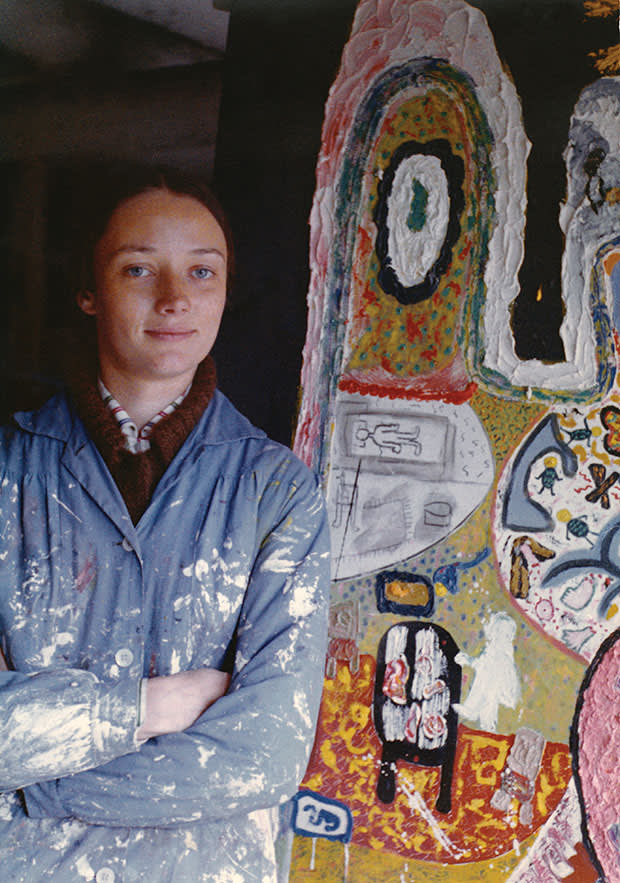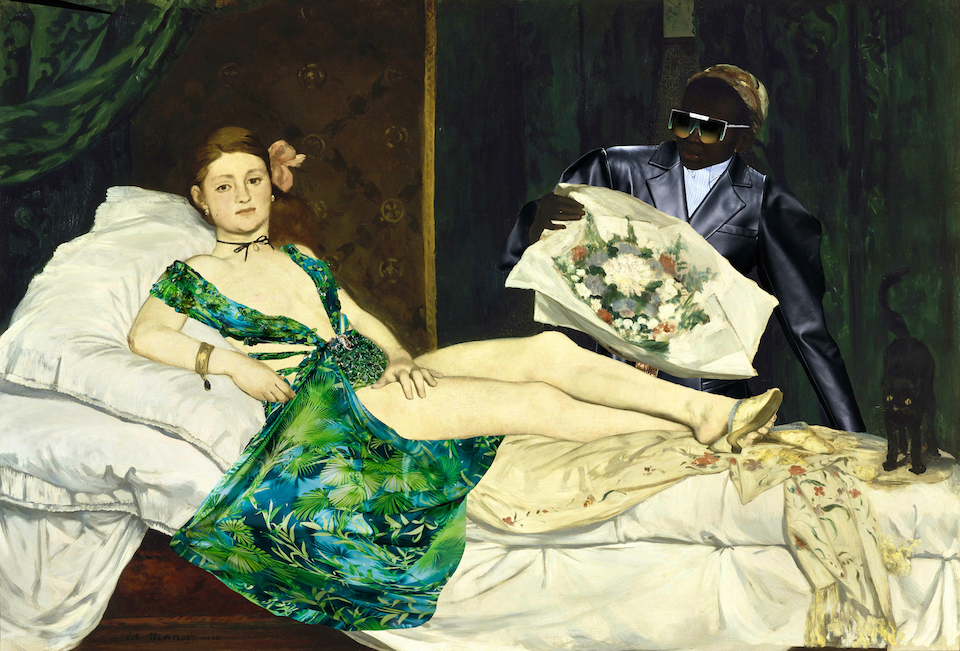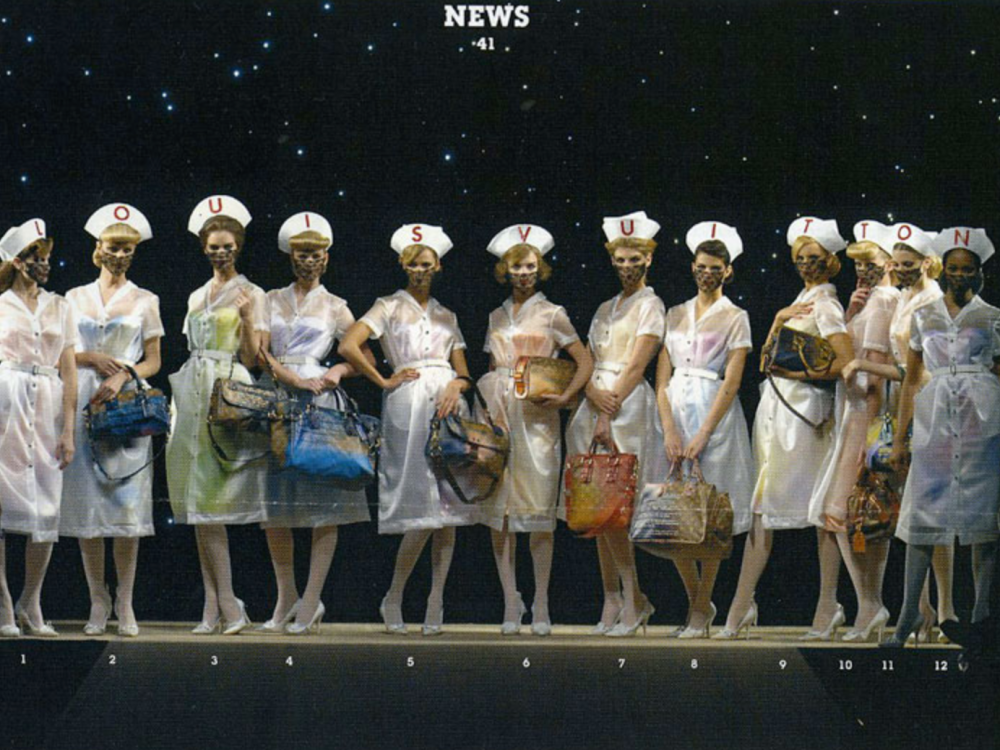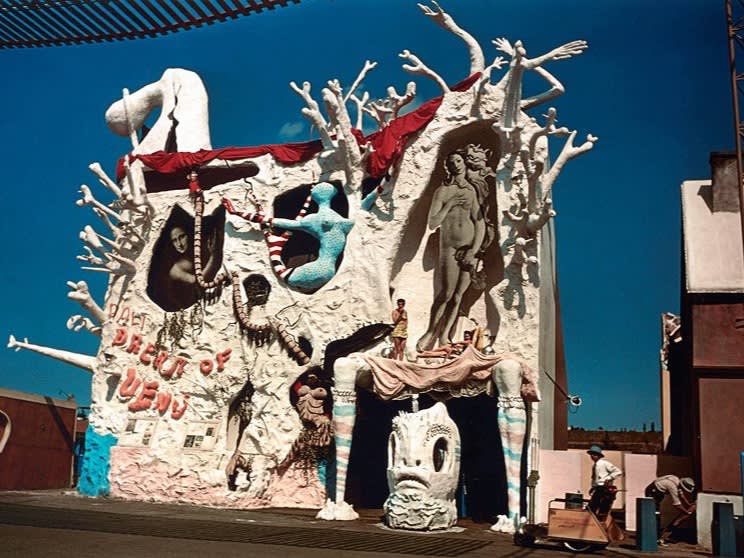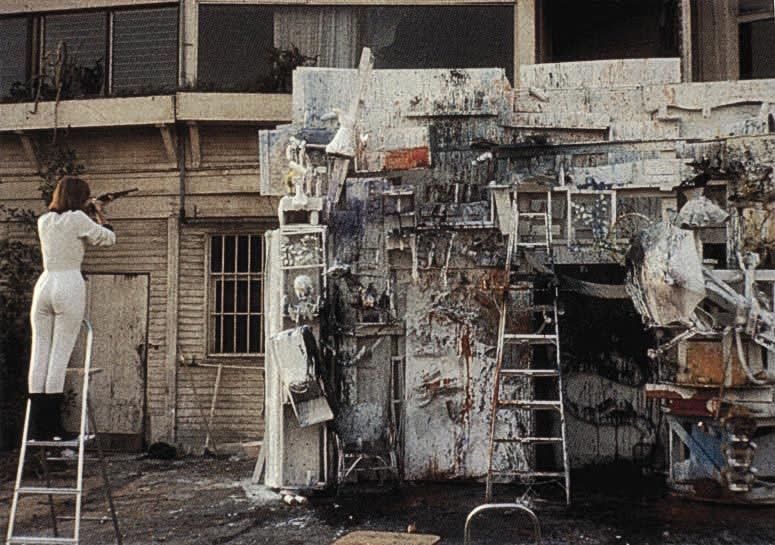
Niki de Saint Phalle
Action de Tir, 1962
It’s not everyday that an artist exhibits the creative capacity to invent a style uniquely their own. From Van Gogh’s fluid brushstrokes and Duchamp’s readymades, to Andy Warhol’s trademark silkscreen process and Keith Haring’s pop graffiti imagery; few have successfully developed a distinctive art form or new medium. Amongst a handful of such cases resides a widely unsung but equally palpable example known as the Pop Gun method, devised by 20th century French-American artist Niki de Saint Phalle.
Widely recognized for her whimsical, large-scale sculptures often depicting animals and curvaceous females, decades before Niki de Saint Phalle laid claim to her vibrant, idiosyncratic style, the artist approached her medium as a therapeutic outlet. Having suffered immense personal trauma as a young girl, de Saint Phalle’s early work lent itself intimately to the neo-avant-garde art world as well as the genre of performance art.
Nikki de Saint Phalle
Stedelijk Museum, 1967
Niki de Saint Phalle
Smaller Scale Sculpture, 1960s
Niki de Saint Phalle first began utilizing the Pop Gun method in 1960 as part of the ‘Salon de Comparisons: Peinture Sculpture’ exhibition in Paris. Inspired by a personal desire of wanting to see a canvas wounded and bleeding, by the show’s opening, de Saint Phalle staged a production entitled ‘Hors d’oeuvre (Portrait of my Lover/Portrait of Myself)’ in which she invited audience members to throw darts at her work.

Niki de Saint Phalle
Portrait of My Lover/Portrait of Myself, 1961
Immediately following the exhibition, De Saint Phalle began finding solace in such destructive acts, personally shooting balloons of paint attached to a stark white plaster canvas near her studio in Paris. Seeking to liberate a work’s potential and ridding her life of violent memories, the Pop Gun technique exemplified De Saint Phalle’s innovative methods, daring aesthetic, and personal quest towards embracing acceptance of the unknown.
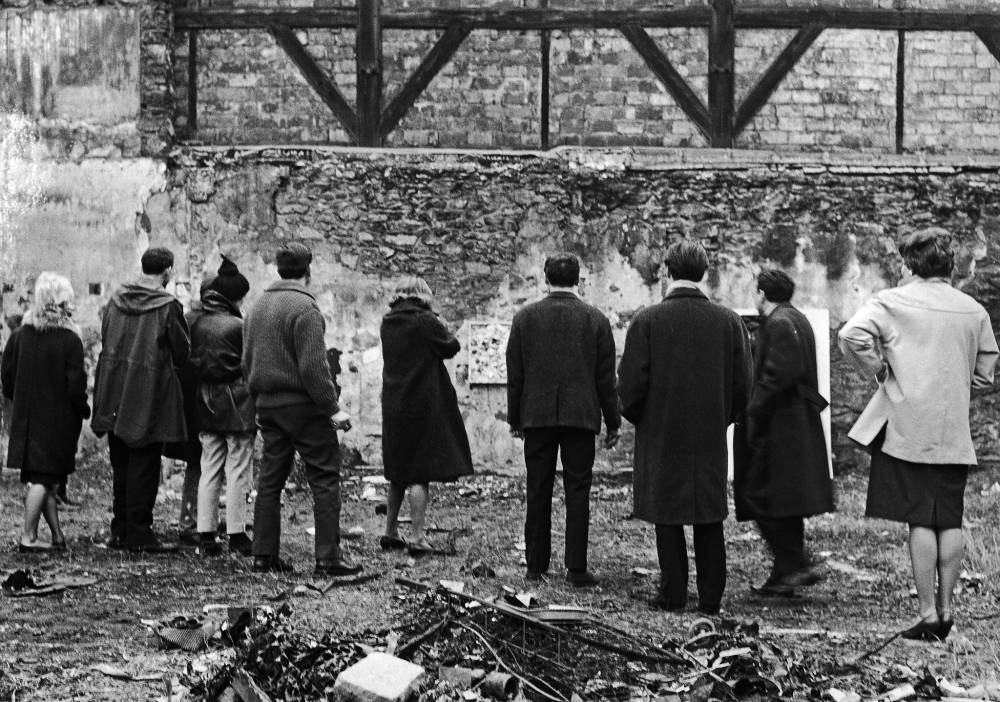
First Shooting
11 Impasse Ronsin, Paris, February 12, 1961
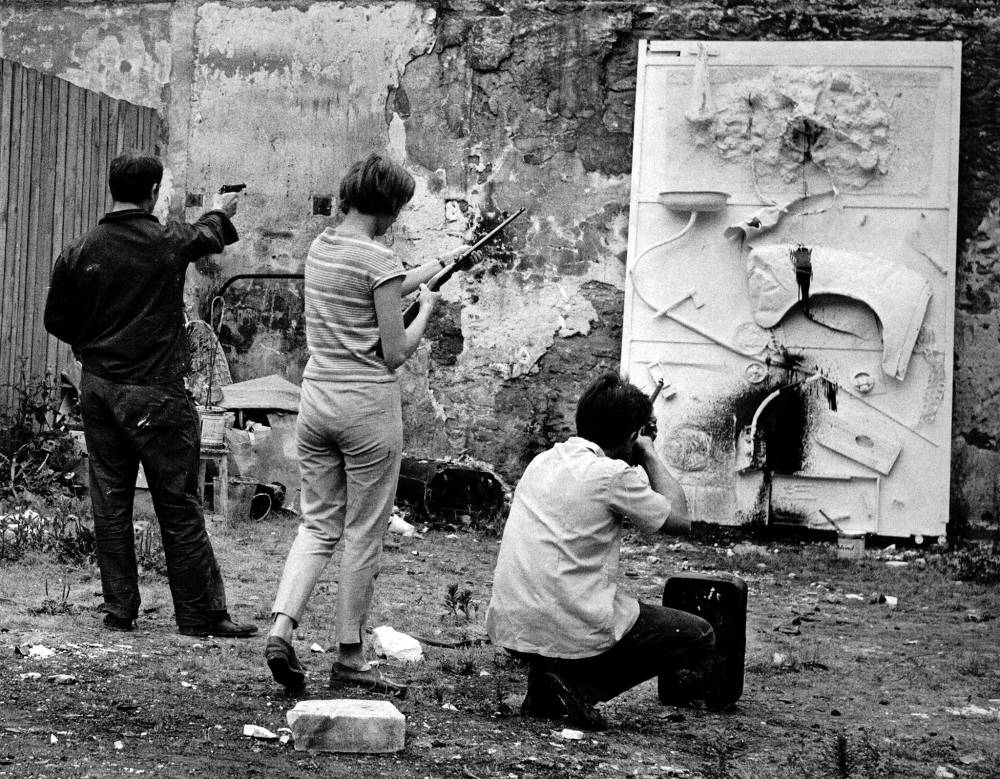
Second Shooting
11 Impasse Ronsin, Paris, 1961
As the 1960s progressed, the Pop Gun method evolved simultaneously, serving no longer as strictly an act of therapy, liberation and rebellion, but a poignant dialogue on the larger political climate present in both the United States and France. Overcome by feelings of cultural instability relating to the Civil Rights Movement, feminist politics and the French-Algerian conflict, De Saint Phalle expanded upon the Pop Gun method to involve larger audiences and international settings.
Niki de Saint Phalle
Shooting Picture, 1961
Niki de Saint Phalle
Malibu Larger Scale Shooting Event, 1962
By 1964, feeling she had creatively exhausted the performative process of shooting, Niki de Saint Phalle sought to further bridge the gap between artist and audience, ultimately leaving an object’s fate in the hands of an untrained participant. As such, the Pop Gun method developed into a technique known as an Operatic Multiple, involving a set of activations performed by spectators; a dramatic experiment which later solidified the female artist’s future as not only a pioneer in performance, but an innovator in the genre of conceptual art.
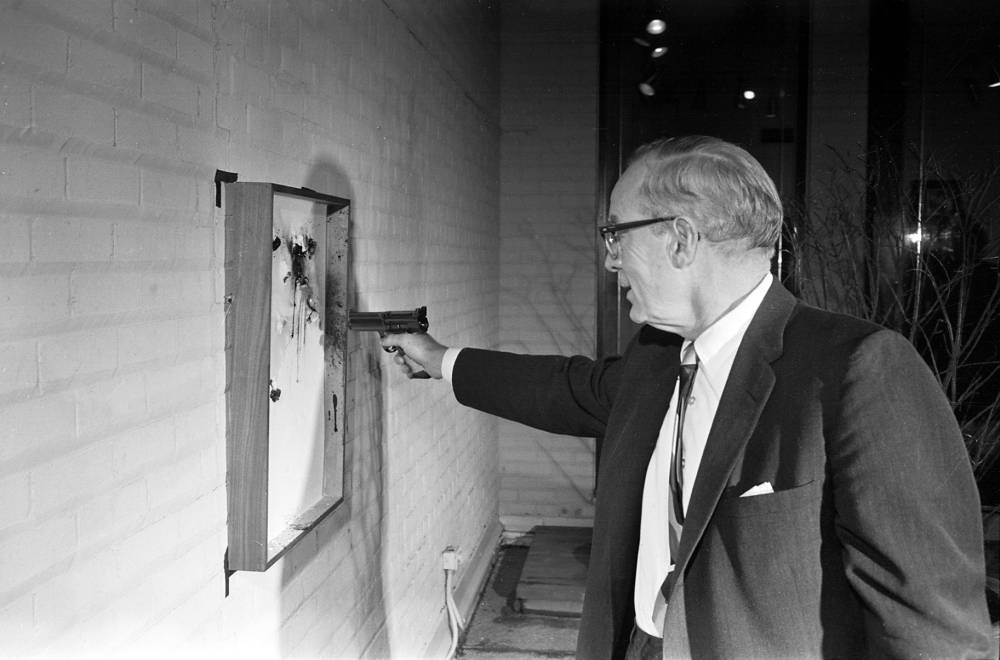
Niki de Saint Phalle
Edgar Nash, takes aim at one of two versions of Untitled Edition MAT 64
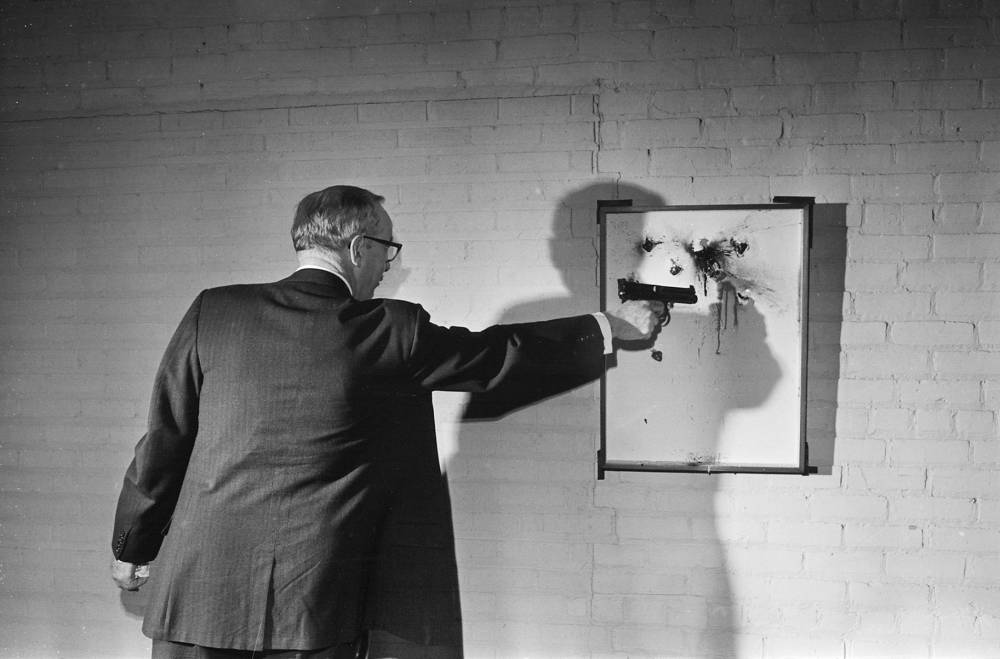
Niki de Saint Phalle
Edgar Nash, takes aim at one of two versions of Untitled Edition MAT 64

Niki de Saint Phalle
Participant, takes aim at one of two versions of Untitled Edition MAT 64
As Niki de Saint Phalle’s career prospered as her personal demons subsided and her focus shifted towards new and varying forms of sculpture. While the early 1960s-era Niki de Saint Phalle, one who was overcome by violence and aggression, isn’t the Nouveau Réaliste artist many know and love today, her impact on the history of performance art must not be overlooked.
